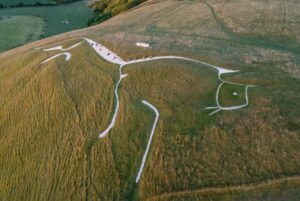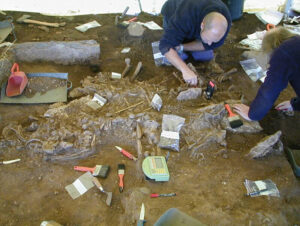From a young age, many of us learned about Iraq’s Fertile Crescent: the cradle of civilization that grew between the ancient Tigris and Euphrates Rivers.
We might remember that the land proved perfect for cultivating crops, setting the stage for the agricultural revolution that would transform humanity.
While little is known about those cities and the people who lived in them, new research has generated a surprising discovery: At least one city-state might have looked like Venice, Italy.
That’s the conclusion from University of Pennsylvania researchers about Lagash, an archaeological site first discovered 40 years ago. The researchers recently used drones to conduct aerial photography of the site.
What they found has completely reshaped conventional knowledge of the ancient city.
Remote-sensing data on the drones suggest that Lagash consisted of four marsh islands connected by waterways and footbridges. For decades, archaeologists believed that Mesopotamian cities like Lagash expanded outward from a temple.
Not so. The new data paints a picture of a city without a ritualistic center. Instead, each part of the city developed its own economy on its own island.

A map of ancient Lagash based on drone imaging. Areas in red represent city walls, while blue areas show waterways that have long since dried up. Image: Lagash Archaeological Project
Once a watery paradise — now a desert
Lagash, also known as Tell al-Hiba, is around 3,600m long and 1,900m wide at its largest. Its founders likely established it between 5,000 and 4,600 years ago. Its inhabitants abandoned the area around 3,600 years ago.
That means it could have existed for over 1,000 years — plenty of time to develop and grow.
But after many excavations over the four decades since its discovery, researchers wanted to visualize what Lagash might have looked like.
According to Emily Hammer of the University of Pennsylvania, there’s only one modern-day equivalent for Lagash’s city design: Venice.
“There could have been multiple evolving ways for Lagash to be a city of marsh islands as human occupation and environmental change reshaped the landscape,” Hammer told ScienceNews.org.
Each island seems to have functioned differently, offering something unique to the city as a whole. One island seems to have more waterways or canals, suggesting residents used it for fishing or collecting reeds.
Two other islands likely had gated walls and city streets, plus areas with large kilns. Those sites were likely the source of pottery and crop growing.
The drone photos suggest that each island had a harbor, with boat travel the likely method of inner-city transportation. Some photos even show potential footbridges between islands — a potential lead for new excavations.
It’s clear that using drones has helped push the research of ancient Mesopotamia in exciting new directions. Thus far, it sounds like Lagash — much like Venice — would be a nice place to visit.
But here’s what we want to know first: Did it have as many problems with tourists?






